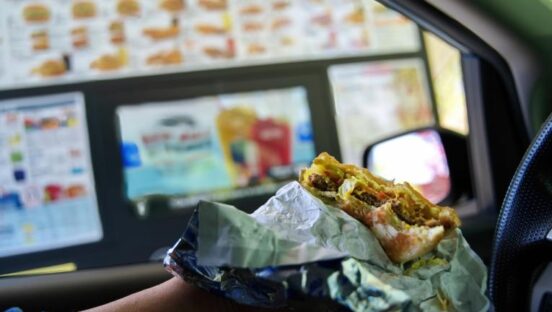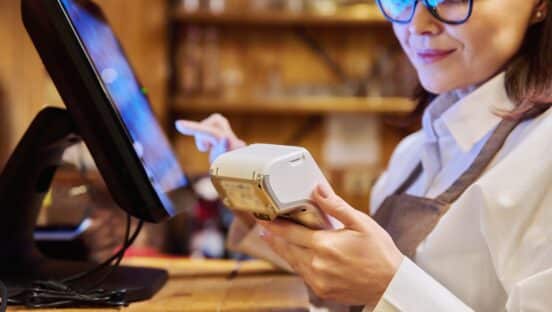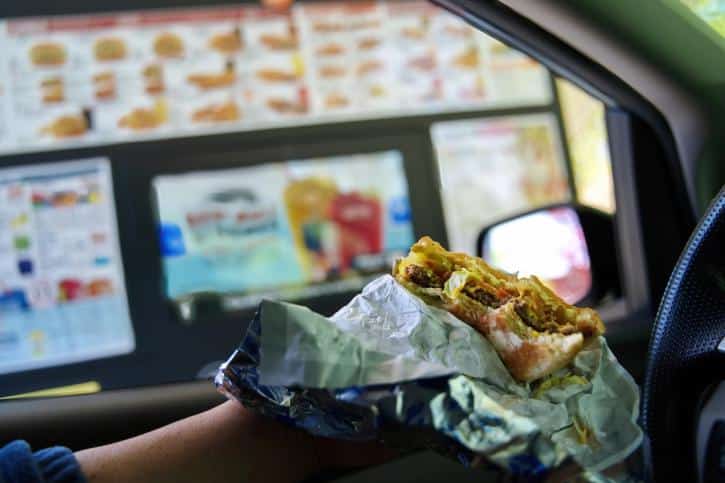
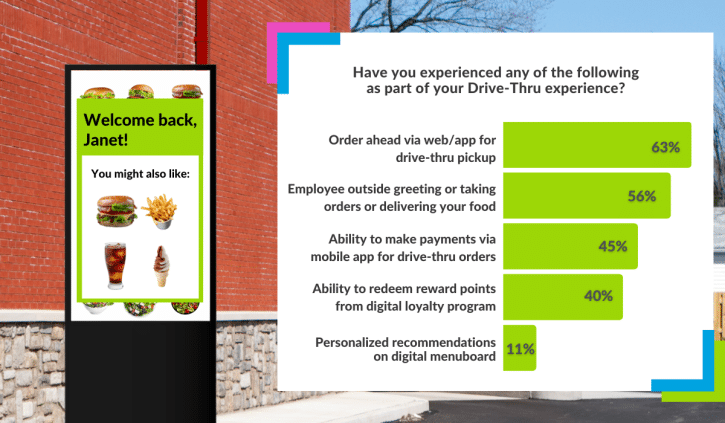
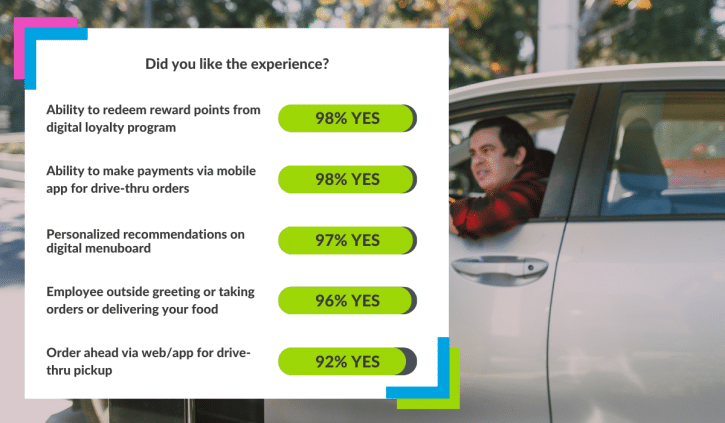
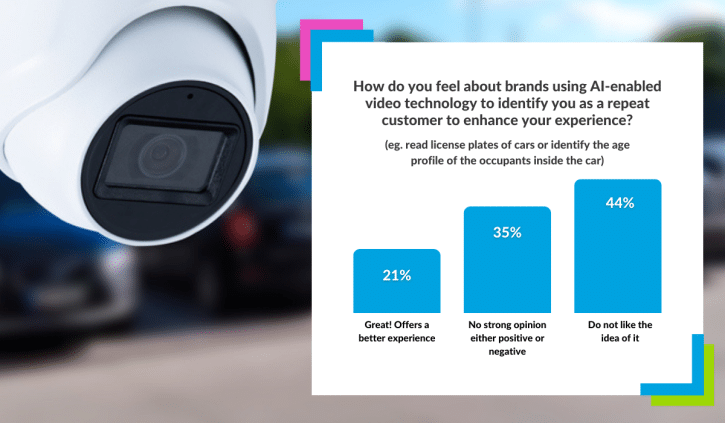
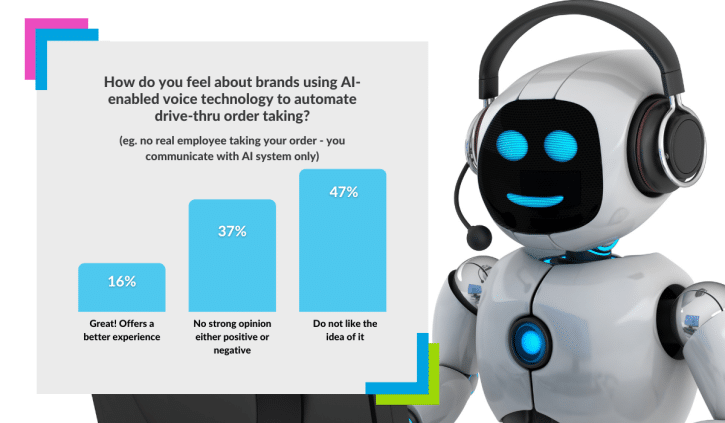

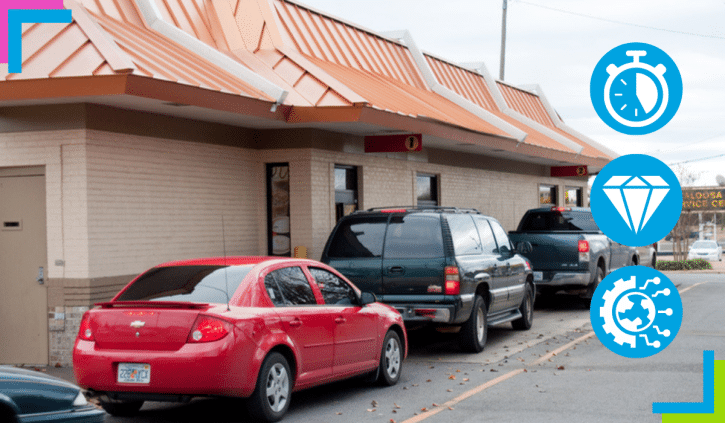
The drive thru has been receiving a makeover in recent years. The largest quick-service brands have been innovating and implementing different types of technology, all in an effort to create a superior customer experience. That makes sense—if consumers want a fast, personalized, seamless experience, then operators must find ways to deliver that to them in spite of ongoing challenges.
“Brands are seeing the value in implementing all different types of technology,” says Sarah Beckett, director of marketing with Intouch Insight. “It’s helping them improve their KPIs, whether that’s speed, or order accuracy, and they’re finding most consumers are pleased with the experience when it is there.”
This new generation of technology includes line-busting ordering via tablet (think somebody walking up to a car and taking an order), mobile-app ordering for drive-thru pickup, dynamic, personalized recommendations on a digital menuboard and AI-enabled experiences.
Intouch Insight recently conducted a survey to find out how consumers feel about some of these different types of technologies. The results, based on over 1,000 survey respondents, were illuminating: consumers overwhelmingly enjoyed some of the latest technologies, while many bristled at others.
What Have Consumers Experienced?
The first survey question Intouch Insight posed to consumers was to determine how widespread different technologies were. The majority of those responding had experienced line-busting order taking, while almost half of respondents had made an order via a mobile app and picked it up at the drive thru. About 40 percent had successfully redeemed reward points from a digital loyalty program.
Just 11 percent of respondents had experienced personalized menu recommendations on a digital menuboard. This figure was somewhat surprising—the 2022 Drive-Thru Report found that around 37 percent of drive thrus now have digital menuboards. This implies that only a small percentage of brands with digital menuboards are using them to personalize recommendations and add-ons.
Do Consumers Like Those Things?
According to the drive-thru technology survey results, consumers overwhelmingly approved of those four new tech items: personalized menu recommendations on a digital menuboard, the ability to redeem loyalty points from a digital loyalty program, the ability to make payments via a mobile app for drive-thru pickup, and an employee outside taking food orders via tablet.
“I think what we’re seeing is that some of these pieces of technology aren’t just new and exciting—they’re must-haves,” says Laura Livers, head of strategic growth at Intouch Insight. “The industry is dealing with this three-pronged labor challenge, where the working population is getting older, the great resignation is causing fewer young people to work, and you’ve got even fewer young people who want to work in the quick-service industry. These pieces of technology are all about offsetting that. But it’s important to not just roll it out and wait for customers to tell you about it—you need to be measuring the impact on your operations as well as how satisfied customers are with the experience of using them.”
AI-Enabled Video Technology
One piece of technology that had a relatively poor approval rating was AI-enabled video technology used to identify repeat customers to enhance the customer experience. Only about 21 percent of consumers who had experienced it approved of it, while 44 percent of consumers did not like the idea of it.
“I don’t want [restaurants] to collect personal information about me,” one respondent said. “Companies already know more than they need to.”
“‘Big Brother’ is watching,” another respondent said. “Targeted offers and advertising I don’t mind so much but reading (and no doubt, recording) license plates or being able to do age profiles on the driver and passengers—no thanks!”
“That ‘Big Brother’ sentiment was really common,” Livers says. “I think what we saw with this survey is something that reminds me of the rollout of the cell phone. There were early adopters and then you have all of those people who felt uncertain about it. It made them uncomfortable, thinking about taking a phone everywhere with them. Well, look where we are 20, 25 years later.”
AI-Voice Technology
An even smaller contingent of consumers enjoyed the experience of interacting with AI-enabled voice technology in the drive thru. In fact, 47 percent of them took issue with it, while just 16 percent viewed it favorably. Consumers cited AI not being able to understand them, or the negative feelings they had toward the lack of human interaction during the ordering process as the main reasons they did not view AI-voice technology favorably.
In general, the two most common reasons for why respondents did not like AI-powered technology—both AI-driven video and voice-enabled AI—was due to the feeling that their privacy was being invaded, and that the technology was directly eliminating jobs.
“I think the most interesting part about AI-driven tech and the survey results that we received is how consumers are perceiving this thing they may or may not have tried,” Beckett says. “Some of it didn’t really match up with reality, frankly—people are worried about the elimination of jobs, and yet, quick-service restaurants can’t even find enough people to work.”
Votes for AI
Not everyone viewed AI-voice technology and AI-driven video technology as a bad thing. Those who enjoyed them cited their ability to improve the experience, making it more efficient and accurate. “People make mistakes,” one respondent said. “AI and computers do not.”
Others found the AI-driven ordering process not just seamless—but safer, as well. “I would eat out more often [if restaurants used these technologies],” another respondent said. “We are elderly and [immuno]-comprised and do not want COVID germs.”
In general, feedback about AI-driven drive-thru technologies was polarizing. Respondents couldn’t even agree as to whether the technologies were more accurate or not. “A common sentiment surrounding voice-based AI in particular was that people just felt like it didn’t work,” Beckett says. “They cited the fact that it resulted in too many errors—there was a huge split in this sense. Those that did not favor AI technology thought it was error prone, while those who did view it favorably thought it reduced human error.”
The Measuring Stick
These survey results from Intouch Insight tell a story about which pieces of technology have the highest approval ratings. That’s something that doesn’t always show up on the P&L statements after technology is implemented, which is where Intouch Insight offers an invaluable service to its clients—the hundreds of quick-service brands that have come to rely upon them for offering a clear picture of what guests do or do not like.
The company has been executing mystery shopping and consumer surveys for over three decades. Each piece of data helps contextualize what is and what isn’t working—and what the future of the industry might look like. After all, if drive-thru technology is meant to create a better customer experience, it’s important to know what the customer is actually experiencing and how they feel about it.
“I’ve lived and breathed this industry for 40 years of my career,” Livers says. “It’s an old adage: customer satisfaction drives customer loyalty and customer loyalty is vital to a business’s success. We know these new technologies are here to stay and will only get better. So how do you measure the real impact that they are having on your operations? There are two pieces to the puzzle: you have to evaluate your execution. How well is it working? And then you have to look at customer satisfaction. That’s where good ol’ fashioned mystery shopping and customer satisfaction surveys come in. That’s where you find out what is working, or where something is broken. It’s how you find out how your customers actually feel.”
For more on Intouch Insight’s capabilities, visit the company’s website.

